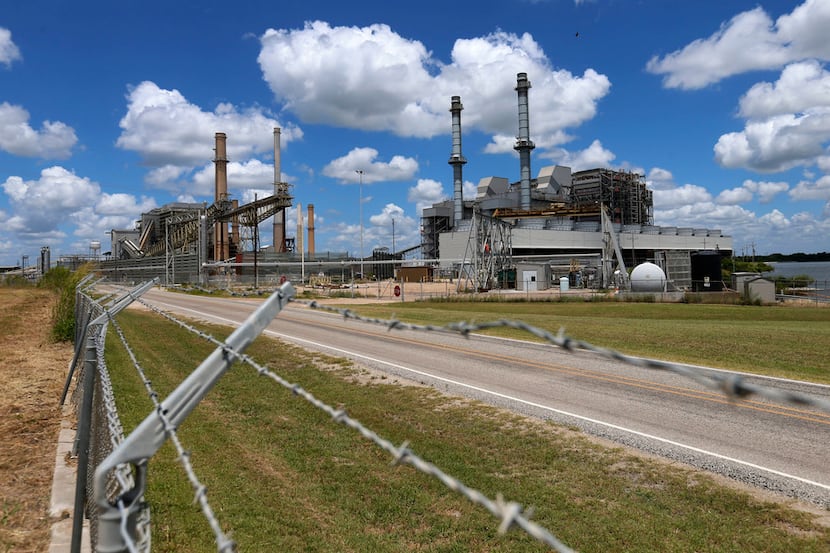“Will you remember that, Texas?”
That was President Donald Trump’s question in the last presidential debate after Joe Biden said he wanted the oil industry to start transitioning to renewable energy. Trump saw this as a gotcha moment, perhaps because Texas is easily the nation’s top producer of oil and natural gas.
But Texas also is No. 1 in wind generation, and solar capacity is coming on fast.
Here’s another sign of energy’s evolving times: Vistra Corp., the state’s largest electricity generator, is retiring coal plants and investing heavily in solar power and storage batteries.
Most of the initial spending, about $850 million, will go toward seven solar projects in Texas, which are expected to be online within two years. That will create almost 950 megawatts of clean energy, enough to power about 190,000 Texas homes during peak demand.
Almost three-fourths of the new clean electricity will be headed to the Dallas-Fort Worth region.
“I’ve told our people, ‘We’re not going to be Blockbuster,’” said Vistra CEO Curtis Morgan, referring to the failed video rental giant that was outflanked by nimble competitors and new technology.
Morgan recalled how Vistra’s predecessor company, TXU Corp., proposed 11 new coal-fired power plants for Texas in 2006. The idea provoked outrage, given the poor air quality in North Texas and elsewhere in the state.
Ultimately, just three coal plants were built, in part because private equity investors bought TXU and scrapped the expansion plan.
“We were like the poster child for coal,” Morgan said in an interview. “That’s not who this company is anymore.”
Vistra, whose headquarters is in Irving, is the largest competitive power generator in the U.S. with a capacity of over 38,000 MW. It has nearly 5 million residential, commercial and industrial customers in 20 states and Washington, D.C.
Vistra reported $11.8 billion in revenue last year, ranking No. 270 on the Fortune 500. It was the 15th-largest public company in Dallas-Fort Worth.
About a month ago, Vistra unveiled its new clean-energy strategy to investors, along with a new climate report.
Morgan and his team had called in outside experts to review the research and data on climate change, he said, and they met for eight sessions, each lasting three hours.
“When I walked out of there, it was clear to me that man was contributing to climate change in a big way,” Morgan said. “And there were plenty of things we could do to change it.”
Vistra’s plan to transform the company starts by retiring coal plants and accelerating the reduction of greenhouse gas emissions. Natural gas will remain the primary fuel source for Vistra’s electricity, accounting for almost two-thirds of generation — today and a decade from now.
But coal’s share will fall from 29% to 10% by 2030. And renewables, which currently account for 0.5% of Vistra generation, are projected to total 18% of the fleet in a decade.
The seven solar projects in Texas are leading the way, but they’re just the beginning, officials said. Vistra has another 1,000 MW of solar and storage in its Texas pipeline, along with plans for another 1,000 MW of storage in California.
It could add 450 MW of renewables in Illinois, depending on the progress of legislation.
“They deserve credit,” said Luke Metzger, executive director of Environment Texas, an advocate for clean energy.
Metzger remembers the company’s big push for coal plants more than a decade ago, along with the governor’s support to fast-track the permits. He considered the plan a serious threat to the Texas environment.
“They still have some significant environmental problems they need to address,” he said, citing emissions from the company’s giant Martin Lake coal plant in East Texas. “But their trends are definitely encouraging.”
Vistra plans to close seven coal plants in Illinois and Ohio from 2022 to 2027. The plants would require significant capital spending to comply with environmental regulations, the company said.
Since Morgan arrived as CEO in 2016, Vistra and its subsidiaries have closed or announced the closure of 19 coal plants totaling more than 16,000 MW. That includes closing three large Texas coal plants in 2018: Monticello, Sandow and Big Brown, whose combined capacity topped 4,000 MW.
The company is targeting a 60% reduction in CO2 emission by 2030, compared to a 2010 baseline. And it has “a firm target to get to net zero emissions by 2050,” although that assumes advancements in technology and changes to public policy.
In its climate report, Vistra called for putting a price on carbon. A carbon fee and dividend plan with a border adjustment would incentivize more companies to reduce emissions and would spur investments in clean technologies, the report said.
“I’m not a Green New Deal person, but at the same time, we’ve got to start making progress,” Morgan said.
There’s a solid business case for moving to cleaner energy. Renewables are often more affordable, especially with tax credits available for solar and the prospect of a carbon tax. Institutional investors, such as Vanguard, Fidelity Investments and State Street Global Advisors, are putting more emphasis on companies' climate disclosures and policies.
And many big power buyers, such as data centers for Facebook and Google, want to buy clean energy because sustainability is important to their employees and communities. It’s also one reason Nasdaq is talking with Texas about possibly moving its electronic trading infrastructure out of New Jersey.
“Some of the biggest customers of renewable energy are corporations — and some are oil companies,” said Bruce Bullock, director of the Maguire Energy Institute at Southern Methodist University.
The Texas market, which accounts for almost half of Vistra’s generation, has several advantages. Perhaps most important: Demand for electricity keeps growing here while it slows nationwide.
Texas already generates more power than any state — almost twice as much as runner-up Florida.
“As long as our demand keeps going up, you can keep putting more renewables on the grid,” Bullock said.
Correction: An earlier version of this story said Vistra was investing in eight solar projects in Texas. It’s investing in seven.


